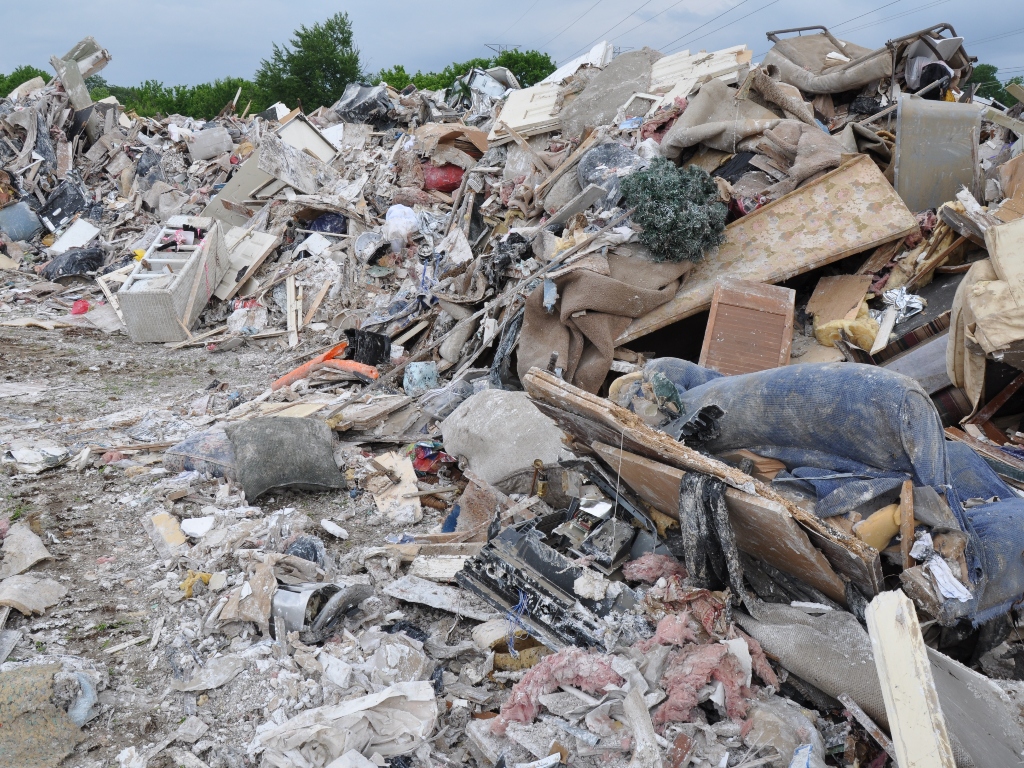NISWMD and the counties started by identifying the resources that were already available instead of trying to reinvent the wheel. The team looked at debris management plans from other counties and at federal and state guidelines for disaster debris cleanup. Using these resources, they began to create a template for what goes into a plan and the steps needed to complete the template.
As a first step, NISWMD and the counties identified debris types and forecasted the different level of debris that would result from different disasters. Forecasts of the types and amount of debris allow communities to better understand what they would need to accommodate. Forecasting was done by using debris data from previous disasters.
Once the forecasting was complete, the team considered their options for cleaning up debris and where it could be stored. Different options were created for the proper disposal of the materials. Recycling and composting options were included in the plans when possible to reduce the amount of materials for disposal to save money and provide a benefit to the environment. Geographic Information System (GIS) technicians developed maps to analyze routes that could be impacted by different disasters and to determine sorting sites where debris wouldn’t soak into the ground. EMA directors used the maps to make decisions. The team also began looking into contractors who could transport the debris to the debris management sites. Contractors outside of the counties were also identified for instances when the counties would not have enough capacity to collect and store debris themselves. The team created tickets that would be distributed to the processing sites to document the debris that is brought in.
After completing the original planning document, the team began designing trainings for personnel that would be responsible for implementation. The team originally looked at holding annual or semi-annual trainings to update personnel and make sure they understood their roles and responsibilities within the plan. The trainings included exercises with cascading issues and locations to better prepare for potentially complicated scenarios. After encountering difficulties with being able to effectively gather all of the people responsible for these large training sessions due to staff turnover and other job responsibilities, the counties switched to just- in- time trainings. These trainings are 15-30-minute sessions that contain checklists, job descriptions, and other instructions. They are designed to be delivered during an event to get key personnel up to speed on what needs to happen. Deployment packages were also created for each site and team responding to a disaster. The packages have maps, phone numbers, guidelines for making damage calculations, and information on how to process and document debris.
Funding
The process was self-funded and did not involve any costs beyond employee time. The actual cost to implement the plan is determined on a case-by-case basis.
Timeline
The development of the debris management plan took around a year.



